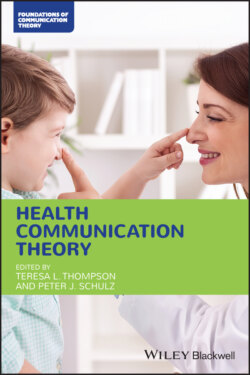Читать книгу Health Communication Theory - Группа авторов - Страница 28
Reactance proneness
ОглавлениеAlthough generally considered a psychological state (Brehm 1966), reactance can also be conceived as a variable that differentiates individuals on their likelihood to experience reactance, a motivational state operationalized as anger and negative cognitions following exposure to a freedom threat (Dillard and Shen 2005) in response to restrictions in autonomy and threats to behavioral freedom (Brehm and Brehm 1981; Chartrand, Dalton, and Fitzsimons 2007; Lienemann and Siegel 2016; Steindl et al. 2015). Reactance proneness is defined as an individual’s proclivity to feel reactance when one’s freedom is threatened or eliminated (Brehm and Brehm 1981; Lienemann and Siegel 2016; Steindl et al. 2015; Van Petegem, Soenens, Vansteenkiste, and Beyers 2015). Among several measures of reactance proneness (Dowd, Milne, and Wise 1991; Hong 1992; Hong and Faedda 1996; Hong and Page 1989; Merz 1983), Hong and Faedda’s (1996) reactance proneness scale is one of the most commonly utilized by researchers to capture individuals’ innate proclivity to experience reactance. Hong and Faedda’s (1996) scale measures one’s agreement with statements such as, “Regulations trigger a sense of resistance in me,” “I become frustrated when I am unable to make free and independent decisions,” and “When someone forces me to do something, I feel like doing the opposite.” Measuring reactance proneness is useful for targeting at‐risk and consistently resistant audiences (e.g. adolescents, substance‐dependent individuals, mental health patients; De las Cuevas, et al. 2014; Grandpre et al. 2003; LaVoie, Quick, Riles, and Lambert 2017; Miller et al. 2006; Miller and Quick 2010; Missotten et al. 2017; Quick, Bates, and Quinlan 2009; Quick, Shen, and Dillard 2013), as individuals high in reactance proneness are more likely to engage in risky behaviors (e.g. Miller and Quick 2010; Quick et al. 2013).
Audience segmentation based on reactance proneness is logical because reactance‐prone individuals respond similarly to messages (Quick et al. 2013; Trump 2016). For example, highly reactance‐prone individuals process and respond similarly to language perceived to threaten their autonomy (Dillard and Shen 2005), giving health communication professionals the possibility to anticipate responses to autonomy‐supporting versus autonomy‐restricting language. Highly reactance prone individuals are self‐driven, self‐reliant, resistant to external influences, and confrontational (Quick et al. 2013; Seibel and Dowd 2001). These individuals will defend their freedom at all costs (Wicklund 1974) and feel particularly attacked by persuasive messages and intentional influence attempts (LaVoie et al. 2017; Quick and Stephenson 2008). As a result, reactance proneness might often lead to message rejection (for a review, see Quick et al. 2013). For example, reactance proneness is associated with boomerang effects in response to smoking cessation messages (Grandpre et al. 2003; Henriksen et al. 2006; LaVoie et al. 2017; Miller et al. 2006), risky sex (Miller and Quick 2010), and with effective parent–child communication (Missotten et al. 2017). Given the increased likelihood of maladaptive responses, it is recommended that promotional messages be tailored to reactance‐prone individuals in a way that bolsters their autonomy. Segmenting an audience with reactance proneness in mind can help practitioners plan for less autonomy‐suppressing appeals and prevent maladaptive freedom restoration outcomes (Trump 2016). Related to autonomy preservation and maintaining a favorable impression, the next section introduces self‐monitoring and how this individual difference variable can be used as an audience segmentation psychographic variable.
